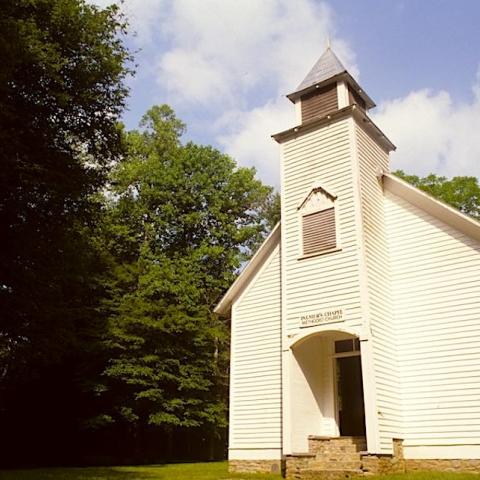
The 1732 map by Herman Moll of North Carolina, including the area that later became Great Smoky Mountains National Park/LOC
You can find maps that capture the mountain range that later became the heart of Great Smoky Mountains National Park dating back to the mid-16th century, including one created by Diego Gutiérrez that labeled the "Apalchen" mountains.
According to the Library of Congress, "(T)he written history and cartography of the area that now encompasses Great Smoky Mountains National Park is among the earliest for any national park's region."
"Many of the early maps, while vague about the particulars, named the mountainous area in the vicinity of what became the national park after the Apalachee Indian tribe. The Gutiérrez map of 1562, which represents a compilation of knowledge obtained by Spain in the course of many expeditions to the American continents, referred to the southeastern mountain region as 'Apalchen,'" the LOC notes.
"Jole Gascoyne's 1682 map included more information than was previously known about the Carolina backcountry, specifically naming the 'Apalatian Mountaines.' An eighteenth-century map by Herman Moll (above) noted not only the 'Appalatian Mt' but also information concerning the location of thirty villages that were labeled 'Charakeys,'" points out the LOC. "This map also stated that good pasture land was located beyond the mountains, suggesting that both the mountains and the Cherokee Indians were barriers between settlers of European origin and fertile land for farming."
The researchers at the Library of Congress also have noted interesting points of history that today can be viewed somewhat as geographical trivial of Great Smoky Mountains National Park and surrounding areas.
Just as the West had its early explorers and pioneers, so too there were early geographical and geological expeditions in the Smoky Mountains that took place during the mid-nineteenth century. Thomas Lanier Clingman and Dr. Elisha Mitchell became involved in a scholarly feud over which of the mountains in the Southeast was the highest. While they were trying to resolve the matter, Mitchell was killed in a fall from the slopes of the mountain named for him. Mount Mitchell turned out to be a mere forty-three feet higher than the peak that was named Clingman's Dome.




 Support Essential Coverage of Essential Places
Support Essential Coverage of Essential Places







Comments
This is so cool